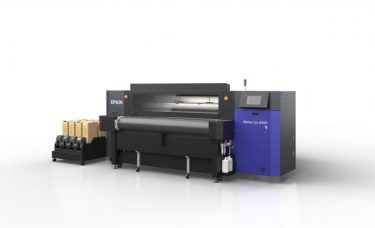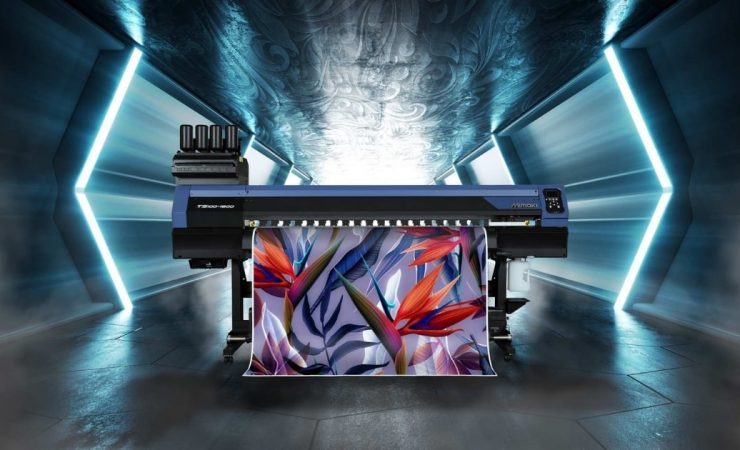Welcome to the first Digital Textile Printer newsletter of 2021. DTP is the latest brand in Whitmar Publications’ portfolio and across the rest of the year we will be developing it into the place to learn about where the digital print and textiles industries come together.
Why textiles? Because it is a massive marketplace, ripe for digital disruption and presents countless exciting opportunities for ambitious printers.
Digital printers have always been an innovative bunch, but the events of the past 12 months have pushed them to prove it like never before. Print companies can adapt to new ways of working, cope with entire sectors being shut down as well as with supply chains being sundered.
They’re always on the lookout for fresh opportunities and new customers, and one area many are already investigating is textiles, a sector so vast that it’s difficult to judge how big it truly is. Still, everyone agrees that the global textiles sector is worth hundreds of billions of dollars and that it is growing fast. Excitingly for printers between 5 and 10% of all the textiles across the globe are now being decorated with digital printing and this percentage, like the wider market, is also growing fast.
Direct to garment printing onto t-shirts, and recently face masks, might be what many of you think of when we say textile printing, but the sector encompasses far more than that. Interior designers are making use of digital processes to create wallcoverings, curtains, bedspreads, rugs and almost anything else you can think of. Fashion designers are embracing the technology, so are manufacturers of sportswear and soft signage has been established for quite a while.

Epson’s ML-8000 became available in the UK from January 2021
On top of this, current market and social trends clearly show why these sectors are growing and will continue to grow. Across the world young people are moving away from fashion trends and towards a future where everyone clamours for a personal style. Custom garments and one-of-a-kind decors seem set to become the norm and digital print is perfectly placed to deliver these solutions.
These same generations are also extremely environmentally conscious and are willing to pay a premium to stay sustainable. They care about the provenance of their clothes and their possessions and digital print offers a way of producing tailored goods on demand, as opposed to the current state of affairs where huge heaps of textiles are printed, stored for months and then sent to landfill.
A similar blend of trends and technology will see designers invest in digital equipment and start their own small businesses, with web-to-print and ecommerce platforms allowing them to bring their creations to the masses. In short, modern people demand personalised products, they demand them at the click of a button, and they demand they don’t hurt the planet. Digital printing, with its short runs and ability to customise, is the perfect technology to help make this transition possible.
Print companies are clearly aware of the opportunities textiles is presenting. Kornit recently opened a dedicated British operation, as well as a $400m deal with Amazon. Polyprint has demonstrated the power of textile printing by expanding out of Greece and into America, opening a subsidiary in North Carolina last year. Epson went so far as to merge two of its own subsidiaries, Robustelli and For.Tex, to take advantage of growth in this space.

2020 saw Kornit agree a huge deal with Amazon
That’s not to mention all the new machinery companies are launching, like Epson’s new ML-8000 or Mimaki’s even newer TS100-1600 and Tiger-1800B Mk III models. On top of this, established options like HP’s Stitch, EFI’s Reggiani and Vutek ranges or Ricoh’s Ri options are all clocking up installations around the globe.
Furthermore, the return of exhibitions will give companies a chance to showcase their products, existing textile printers an opening to share ideas and, most importantly, an opportunity for everyone else to learn more about this rapidly growing sector.
We know that there won’t be a physical drupa in 2021, but if vaccines have the impact we are all hoping for, there is a chance that we will see Fespa’s Global Print Expo take place in Amsterdam this October. On top of this a rescheduled Heimtextil will arrive in Frankfurt in January 2022 and Printwear & Promotion Live! was recently confirmed to be landing in Birmingham the following month. Hopefully, by the time Milan welcomes ITMA in June 2023 the whole world will have put the pandemic behind it and digital printing will have firmly established its place in the textile sector.
All of this heralds a new chapter in print’s story, but also in the tale of textiles. There’s lots to talk about, lots of information to share and lots of stories to tell and that’s what Digital Textile Printer is going to be doing throughout 2021.
The marketplace is huge, diverse and complex and our job is to make sure that printers understand everything they need to know when it comes to textile printing, from fabrics to software to market trends and much more.
But more than this, we want to introduce printers to key figures in fashion, in interior design and all across textiles. Many are already interested in what digital printing has to offer, and countless more people doubtless will be when they learn more about it.
So stay tuned and enjoy the rest of the newsletter!





